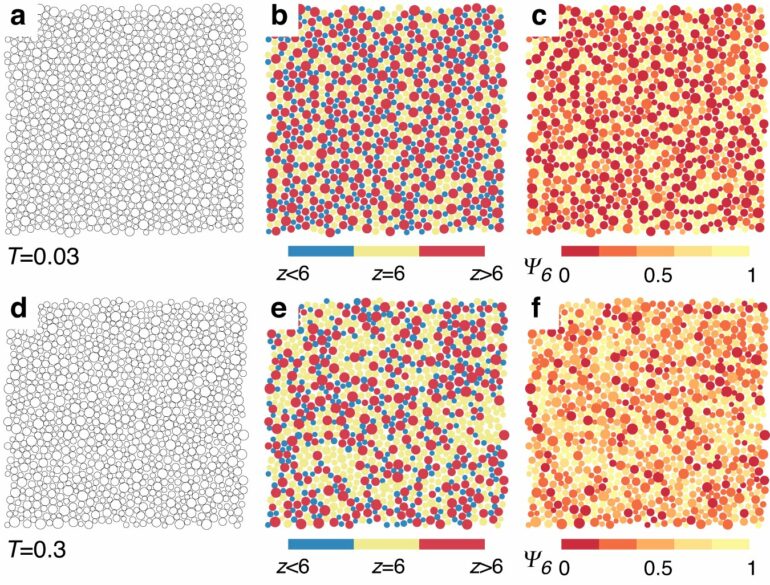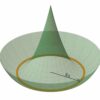Humans have been entranced by the unique beauty and physical properties of glass, producing jewelry, containers, and tools from the material for millennia. However, the physics underlying the phenomenon of glass formation remains surprisingly complex.
In a study published in Nature Communications, researchers from the Institute of Industrial Science, The University of Tokyo used a numerical simulation to uncover new insights on the formation of glass out of particles of varying sizes. They found a new type of compositional ordering consisting of patterns with small and large particles, which could affect the chance the glass formed correctly, or became partially ordered.
The essential idea is that glass is neither a free-flowing liquid nor an orderly, structured crystalline solid. Instead, it is a “metastable supercooled state” in which a liquid has been cooled so quickly that its constituent particles do not have enough time to rearrange themselves, and they are instead “frozen” into a disordered configuration.
However, the conditions under which an ideal glass forms, as opposed to creating regions with crystallization or phase separation, remain obscure. A better understanding is needed to improve the physical properties of glassy materials, including smart device screens.
In recent years, a specialized model liquid has been developed to achieve a deeply supercooled state, enabling researchers to study its properties without interference from crystallization or phase separation. This model liquid has gained popularity in the scientific community. To gain a better understanding of the characteristics of this model liquid, the researchers employed computer simulations.
Unexpectedly, these simulations revealed that unconventional structural arrangements, such as connections between small and large particles as well as patches formed by medium-sized particles, can significantly influence the ultimate behavior of the material during the cooling process. The researchers tracked the “coordination number” of the particles, which measures how many neighbors it is touching. This allowed them to identify novel patterns of small and large particles.
“The observed network-like structure we saw was unusual and has not been reported in previous studies. We called this unconventional pattern ‘exotic compositional order,'” says lead author Hua Tong. Such exotic compositional ordering is found to have an unusual impact on structural relaxation dynamics. “Our results raise doubts about whether this model liquid can be considered an ideal glass-forming liquid,” explains senior author Hajime Tanaka.
The findings of this study have the potential to contribute to the development of an ideal model liquid, specifically designed to explore the fundamental nature of glass transition.
More information:
Hua Tong et al, Emerging exotic compositional order on approaching low-temperature equilibrium glasses, Nature Communications (2023). DOI: 10.1038/s41467-023-40290-1
Provided by
University of Tokyo
Citation:
Model with an extraordinary glass-forming ability expected to approach the ideal glass state, if it exists (2023, August 8)

